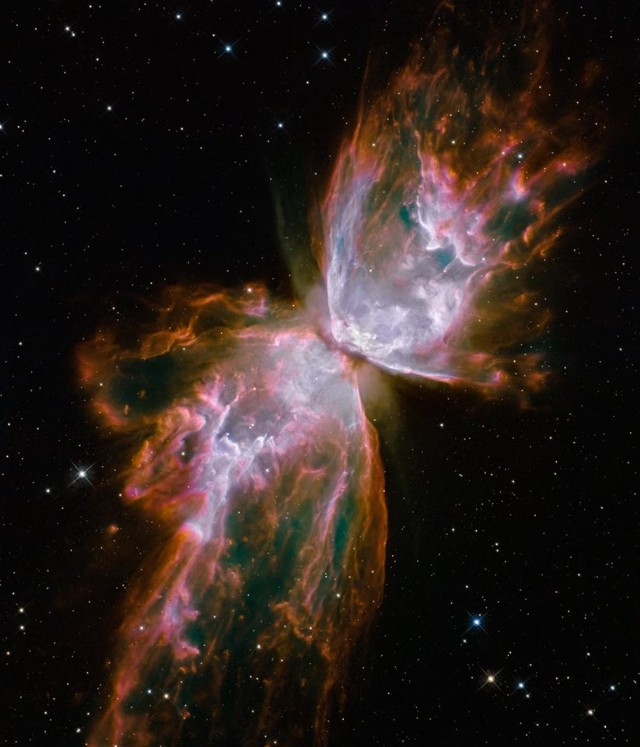Butterfly Reverie Poem by Harley White
Butterfly Reverie
Is it a butterfly out in the blue,
poised in its daintily delicate flight—
nebula N G C six three oh two—
offering rhymers a poem to write?
In our galaxy, that is the Way Milky,
with structure bipolar in particular,
appear those elongated wings so silky,
from the gas that's spewed forth perpendicular
to the doughnut-shaped dust ring pinching its core.
Talk about outer space distances far,
this butterfly stretches two light-years and more,
half the distance from Sun to the nearest star,
which is Alpha Centauri, to be precise.
This fairytale picture, a magical treat
like sugar and spice and everything nice,
doth awaken our childhood senses sweet.
Found in the Scorpius Constellation,
it's known as the Bug Nebula as well.
Yet in this versified celebration
its Butterfly name suits the tale to tell.
With dust belt that gives it an hourglass mien,
though appearance deceives and perceptions can spoil,
one conjures up quite an impression serene.
But cauldrons of heated gas furiously roil
within each planetary nebula wing
of the butterfly that it's resembling.
The gas tears across this immense outer space
at six hundred thousand miles an hour!
Imagine a butterfly at such a pace
frantically flitting from flower to flower!
So Butterfly Nebula's not as it seems.
Like the bubble, bubble, trouble and toil
in nightmarish witch Shakespearean dreams,
it is seething in inner and outer turmoil…
And with dying star center five times mass solar,
no wonder that poor butterfly is bipolar!
< January 2015 >

Image: NGC 6302 (Butterfly Nebula, Bug Nebula)
The image is a composite of separate exposures made by the WFC3 instrument on the Hubble Space Telescope. Six filters were used to sample narrow wavelength ranges. The color results from assigning different hues (colors) to each monochromatic image.
* * * * * * * * *
Image credit: NASA, ESA, and the Hubble SM4 ERO Team
This poem has not been translated into any other language yet.
I would like to translate this poem